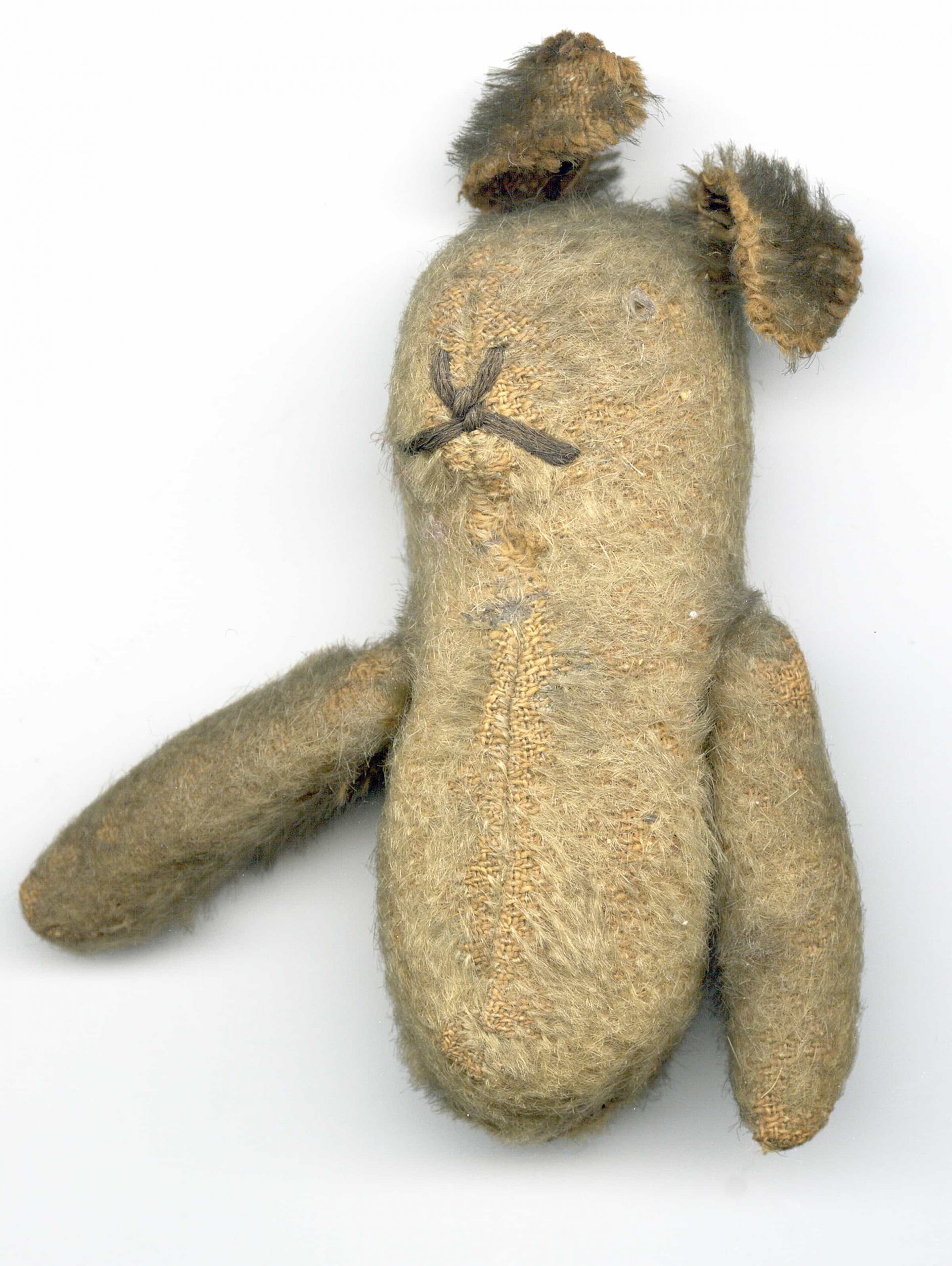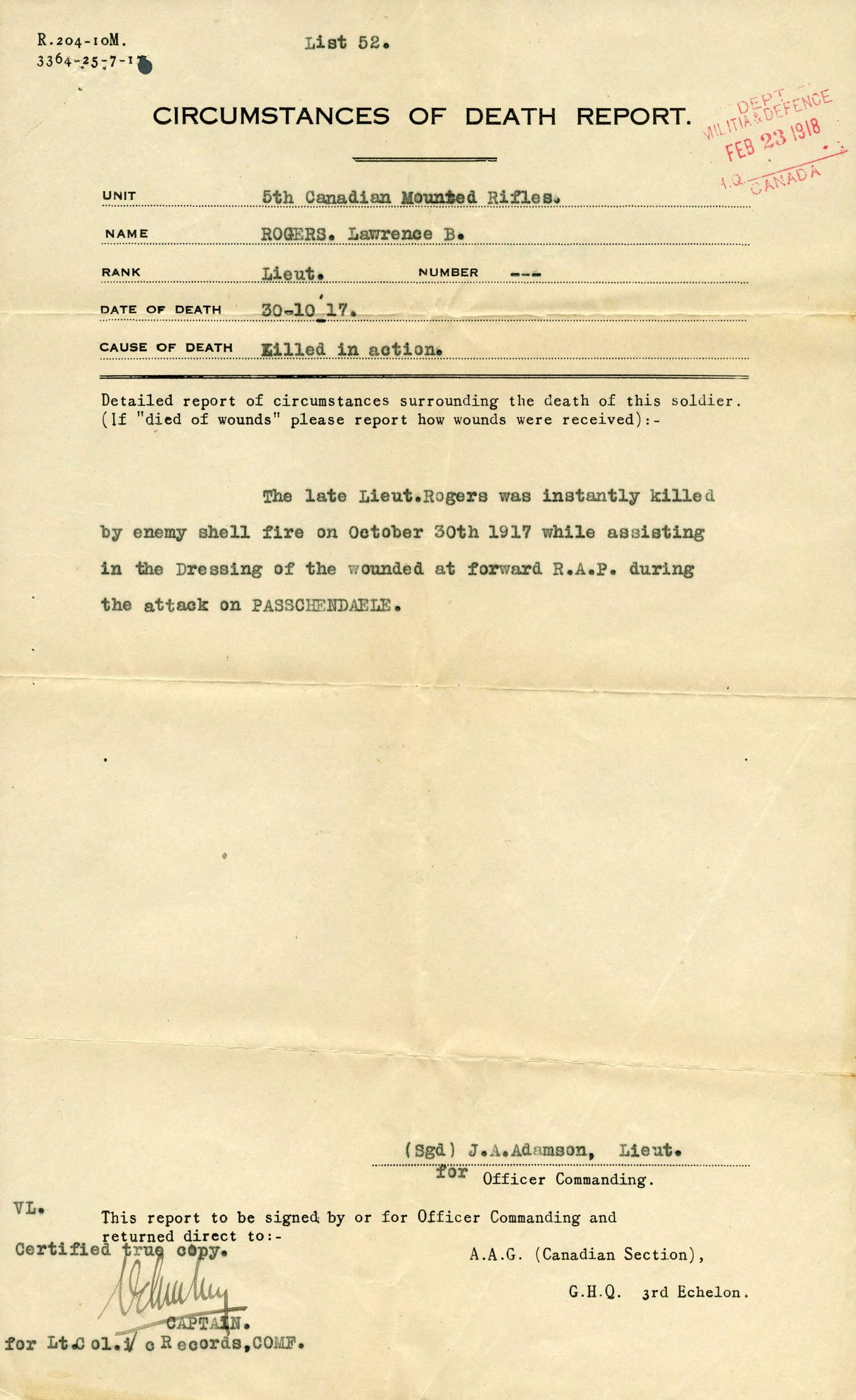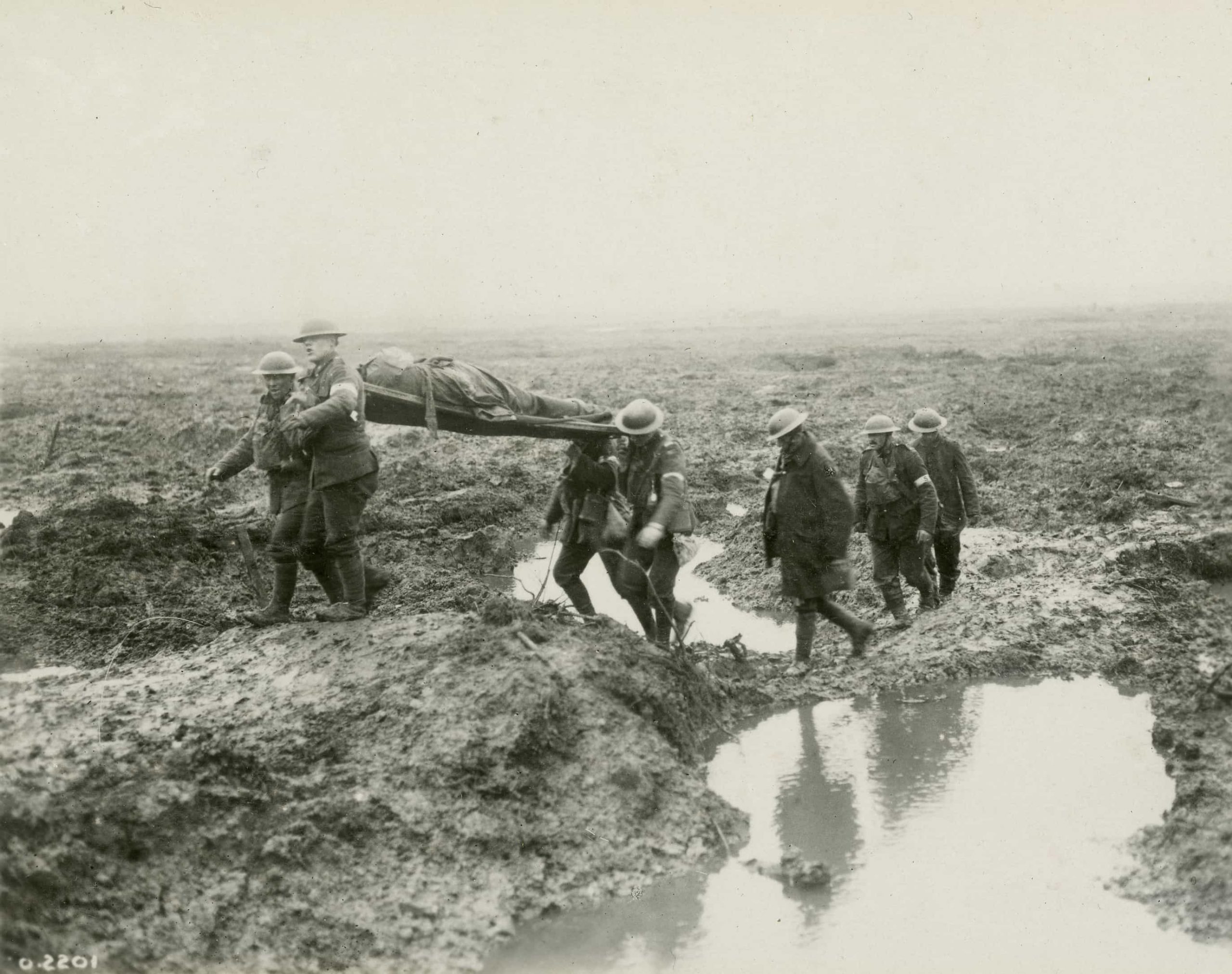The Canadian War Museum holds millions of objects in the National Collection. Each one tells a story. Let’s look closely at one of the museum’s most beloved objects: Teddy Rogers.
Allow me to introduce you to Teddy Rogers. Standing only 12 centimetres tall, this small bear has a big story: he went to war!
Aileen Rogers grew up on a farm in East Farnham, Quebec. She and her brother, Howard, enjoyed swimming and riding their bicycles. And Aileen loved playing with her teddy bear.
When she was 10 years old, Aileen’s father enlisted to serve in the First World War and her life changed forever.
It was February 1915 when Lawrence Rogers enlisted in the 5<sup>th</sup> Canadian Mounted Rifles (Quebec Regiment). While Aileen couldn’t know exactly what military service would entail, she did know that her father was leaving, and that he would be in danger. But what could she do?
With a heavy heart, she gave him Teddy as a token of her love. She hoped Teddy would serve as a good luck charm, and keep her father safe.
Lieutenant Lawrence Browning Rogers served as a stretcher bearer in the First World War, and later as a front-line medical officer.
On October 30<sup>th</sup>, 1917, Lawrence was performing his duties as a medic at the battle of Passchendaele, in Belgium. A few years earlier, the land would have been farmer’s fields, similar to his own farm in Quebec. But the war had taken its toll, and the devastated landscape of shell holes and mud must have felt very far from home.
All around him, bombs exploded and machine guns rattled. But Lawrence couldn’t let himself get distracted—he had a job to do, helping the wounded. The attack had started at 5:50 that morning, and by days end there were thousands of Canadians wounded or dead.
With Teddy in his pocket, Lawrence was tending to the wounded of his unit when disaster struck. He was killed by enemy shell fire.
Teddy was found and sent back to Canada.
Today, Teddy is displayed in the Canadian War Museum, where he serves as a touching reminder of the cost of war.
Teddy represents the love that Aileen Rogers had for her father, Lawrence. The 650,000 Canadians who served in the First World War all had loved ones, who missed them, and worried about them.
The 61,000 Canadians who were killed in the First World War were mourned by those left behind. While Aileen was reunited with Teddy, she would never see her father again.
War is a devastating human experience, with lasting impacts on those who serve, their families and their communities.



